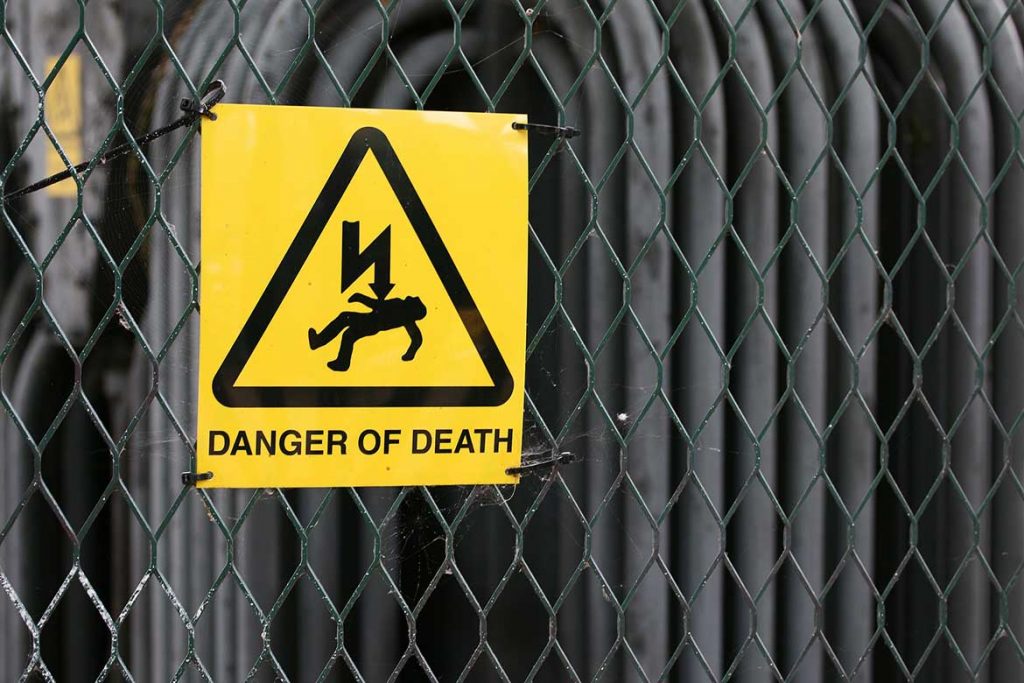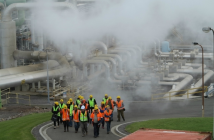Industrial workplaces can be hazardous environments with various potential health and safety risks – managers must ensure employees are aware of the dangers and take precautions to minimize these risks
Working in an industrial setting comes with a certain amount of risk. However, by being aware of the common health and safety hazards in these environments, you can take steps to protect yourself and your coworkers.
Implementing these steps can help minimize your industrial workplace’s health and safety risks. Remember, it is always better to address potential hazards early rather than wait for an accident to occur.
Taking the necessary precautions can create a safe and healthy work environment for your employees.
Here are some of the most common risks to be aware of:
- Slips, Trips, and Falls: One of the most common accidents in industrial settings is slips, trips, and falls. These happen due to cluttered or slippery work areas, poor lighting, and other hazardous conditions.
- Exposure to Hazardous Materials: Another hazard to be aware of is exposure to hazardous materials. Exposure can occur when working with chemicals, cleaning products, or other potentially dangerous substances.
- Electrical Hazards: Electrical hazards can result from faulty wiring or equipment and improper use of electrical tools and devices.
- Heavy Machinery Accidents: Accidents involving heavy pieces of machinery, such as forklifts or industrial equipment, can also be dangerous in industrial settings.
- Fire Hazards: Using flammable materials and equipment, such as welding tools, can increase the risk of fires in industrial workplaces.
- Ergonomic Hazards: These hazards arise when workers are required to perform tasks that strain their bodies, such as lifting heavy objects or sitting for long periods.
Now that you are aware of the potential hazards in industrial settings, these tips can help minimize the risks.
Implement a Safety Training Program
A well-designed safety training program can play a crucial role in minimizing health and safety risks in the workplace.
By providing employees with information on how to work with various tools and materials safely and how to identify and respond to potential hazards, a safety training program can help reduce the chances of accidents and injuries.
One of the most critical aspects of such a program is how to use a defibrillator. It can save lives in case of a cardiac emergency, and it can be the difference between life and death.
Further, regular safety training can also help employees feel more confident and comfortable in their work environment, leading to improved job performance.
Regularly Inspect and Maintain Equipment and Machinery
Regular inspections and maintenance of equipment and machinery can help prevent malfunctions or accidents. Examples can include:
- Checking for potential electrical hazards
- Ensuring that machinery is operating properly
- Replacing worn-out or damaged parts
Provide Personal Protective Equipment
Personal Protective Equipment, or PPE, is essential for any worker in an industrial setting. PPE includes items such as gloves, goggles, and respirators that help to protect workers from exposure to hazardous materials.
Therefore, employers should provide PPE and ensure employees know how to use it properly.
Implement Safe Work Practices
In addition to providing training and personal protective equipment, you should implement safe work practices at your industrial workplace. Such practices might include things like:
- Requiring employees to wear proper clothing
- Prohibiting the use of cell phones while working
- Establishing procedures for dealing with hazardous materials
Report Any Incidents or Potential Hazards
If you notice anything that could pose a health or safety risk, you should report it immediately. It includes accidents or incidents and any potential hazards you notice, such as a slippery floor or faulty equipment.
By addressing potential hazards early on, you can prevent them from leading to accidents or injuries in the future.
Clean Up Any Spills Immediately
Any spilled substance, such as water or another liquid, can create slip-and-fall hazards. Slips and falls are leading causes of injuries in the workplace, making it necessary to clean up spills promptly. In addition to slips and falls, spills can lead to other health and safety risks.
For example, a chemical spill can create respiratory hazards if inhaled. Furthermore, if a spill remains unattended, it can also attract insects or other pests, posing a health risk.
Keep Walkways and Work Areas Clean and Organized
Maintaining a clean and organized workspace can also help minimize health and safety risks in the industrial workplace. For example, keeping walkways clear of clutter reduces the chances of tripping or falling, and organizing materials can prevent accidents such as fires or chemical spills.
Communicate Your Health and Safety Policy and Expectations to Employees
Employees must understand the company’s health and safety policies and expectations for a workplace to minimize health and safety risks effectively.
The best way to accomplish this is to communicate regularly, provide training, and ensure that employees have access to the policies in writing.
Use Labels and Signs to Clearly Communicate Hazards
Clearly marking areas where there are potential hazards, employees can be more aware of the risks and take steps to avoid them.
In addition, labels and signs can help to prevent confusion and misunderstanding. If people are not sure what a hazard is, they are more likely to take unnecessary risks.
Moreover, labels and signs can also help to remind employees of the proper procedures for dealing with dangerous situations.
Encourage Employee Input and Feedback on Health and Safety Issues
In addition to a formal safety training program, it is vital for employees to feel comfortable speaking up about any health and safety concerns they may have.
This can be encouraged through open communication and a culture that values employee input. Regular meetings or check-ins with employees can provide an opportunity for them to raise any issues or concerns.








